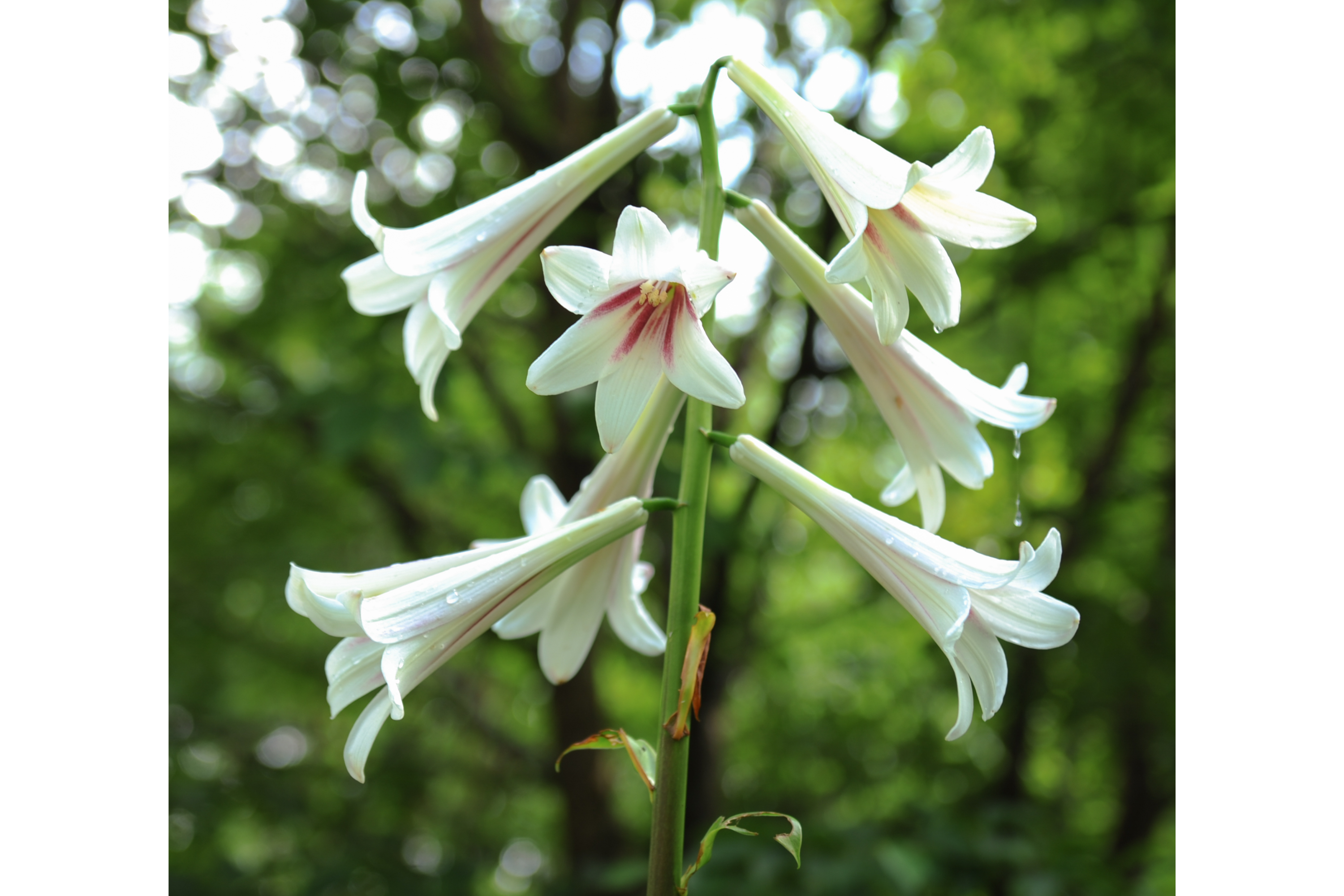Cardiocrinum cathayanum
(Cardiocrinum cathayanum)

Description
Cardiocrinum cathayanum (Syn. Lilium cathayanum) is a species of Chinese plants in the lily family, with large showy flowers. It is native to the Provinces of Anhui, Fujian, Henan, Hubei, Hunan, Jiangsu, Jiangxi, and Zhejiang. Cardiocrinum cathayanum is similar to the more widespread and commonly cultivated C. giganteum, but it C. cathayanum generally has only 3-5 flowers per raceme, as compared to 10-16 flowers in C. giganteum. Cardiocrinum is a genus of bulbous plants of the lily family first described in 1846. They are native to the Himalaya, China, the Russian Far East, and Japan. The bulbs are usually formed at the soil surface. The preferred habitat is woodland. The plants tend to be monocarpic, dying after flowering. Cardiocrinum is a genus of monocarpic perennial herbs. Cardiocrinum was originally described by Endlicher in 1836 as one of five sections of Lilium, to which it is closely related. Later authors considered it a separate genus. The common name is giant lilies. They differ from Lilium in some characteristics, most notably in the heart shaped leaves. The genus name alludes to these leaves, from the Greek kardia, heart, and krinon, lily. The Himalayan species Cardiocrinum giganteum is the largest of any of the lily plants, growing up to 3.5 metres high.
Taxonomic tree:







